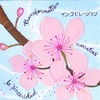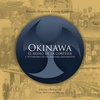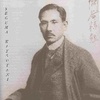
This month, we are pleased to present two poems in Spanish by Peruvian poet Doris Moromisato Miasato. She is an environmentalist, feminist and Buddhist and these two poems are beautiful tribute songs, one for her father and one for the famous Japanese artist Hokusai. From memories evoked to those imagined, …

Argentina y Brasil, los dos colosos de América del Sur, celebran este año el primer centenario de la inmigración okinawense. En sus programas figuran conciertos, foros, torneos deportivos y eisa o marchas artísticas. Coincidentemente, en el Perú se acaba de publicar el libro Okinawa: el reino de la cortesía y …

Jamás, en toda mi vida de poeta, me había sentido en una situación tan ambivalente como cuando me pidieron recitar contra el presidente Alberto Fujimori. Era un acto de protesta ante su actitud de permanecer en el poder. Al llegar, me di cuenta que en la multitud yo era la …

El debate entablado, estos últimos meses entre Antonio Zapata1 de Perú y Ariel Takeda2 de Chile sobre el ex presidente peruano de origen japonés, Alberto Fujimori, ha causado sumo interés entre lectores y lectoras de Discover Nikkei. Para Takeda, las sentencias judiciales en contra de Fujimori son muy tempranas y …

Á pesar de haber transcurrido más de cien años de presencia japonesa, la fusión entre sus descendientes y el Perú no se ha producido. Si bien existe un profundo intento de integración y unidad, la experiencia histórica de mutua desconfianza entre ambas partes ha pesado más. Las clases gobernantes de …

La historia de las organizaciones nikkei en el Perú tienen un momento muy claro: antes y después de la segunda guerra mundial. Desde 1909 hasta finales de los años 30, los inmigrantes habían formado en todo el territorio peruano centenares de asociaciones, gremios laborales y comerciales, escuelas, agrupaciones femeninas, periódicos, …

A punta de talento y una rica experiencia histórica, la presencia japonesa ya forma parte de la tradición literaria en el Perú. Consagrados escritores peruanos, como José María Arguedas o Mario Vargas Llosa, han insertado en sus narrativas personajes de origen japonés que muestran una imagen poco justa y fidedigna …

Durante cien años la presencia japonesa estuvo presente en todos los espacios del Perú, pues sus integrantes incursionaron en diversas áreas públicas. Desde una pionera huelga en 1899 hasta un presidente nikkei que gobernó diez años el destino del país, pasando por deportistas, políticos y legisladores. Si bien es cierto …

Una vez Tilsa Tsuchiya, la artista plástica más importante de Perú, afirmó: “Si uno observa el arte precolombino, el chino, el japonés, verá que en el fondo son la misma cosa. ¡Pero si el Perú es oriental!”. La verdad es que Tilsa, descendiente de un inmigrante japonés y de una …

Las primeras presencias japonesas en Perú se dieron hace 400 años en Lima. Recién a partir de 1899 se requirió a los japoneses como trabajadores agrícolas y miles de ellos se adaptaron a los desiertos de la costa, superando el soroche o mal de altura de los andes y los …